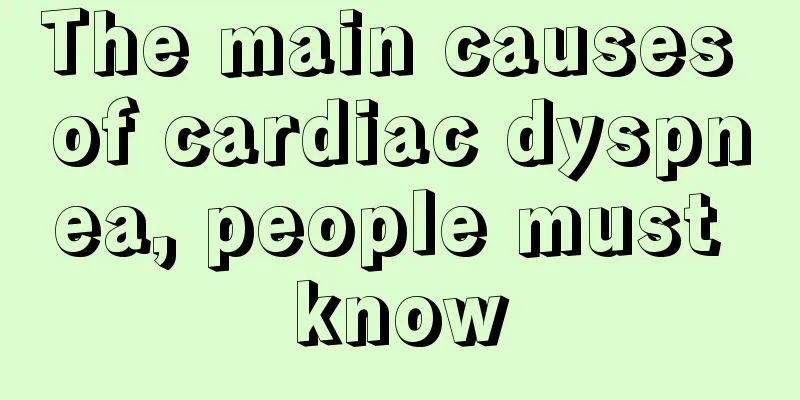The main causes of cardiac dyspnea, people must know

|
When it comes to cardiac dyspnea, many people may not be very clear about it. In fact, cardiac dyspnea is a type of breathing difficulty that occurs when heart disease leads to heart failure, which can endanger our lives. So what is the cause of cardiac dyspnea? Let’s find out together. Cardiogenic asthma is paroxysmal asthma caused by left heart failure and acute pulmonary edema. Its clinical manifestations during an attack may be similar to those of bronchial asthma. Cardiac asthma is caused by a history of hypertension or heart disease. Asthma is accompanied by frequent coughing, foamy sputum, especially bloody sputum, heart enlargement, arrhythmia and abnormal heart sounds. The dyspnea caused by left heart failure is due to the increase in pulmonary circulation capillary pressure caused by pulmonary congestion, and the accumulation of tissue fluid in the alveoli and lung tissue spaces, forming pulmonary edema. Pulmonary edema affects the gas exchange of the alveolar wall capillaries, hinders the expansion and contraction of the lungs, causes abnormalities in ventilation and gas exchange functions, leads to a decrease in the partial pressure of oxygen and an increase in the partial pressure of carbon dioxide in the alveoli, stimulates and excites the respiratory center, and the patient feels difficulty breathing. Cardiac dyspnea is divided into the following categories according to severity: exertional dyspnea, paroxysmal nocturnal dyspnea, orthopnea, cardiac asthma, and acute pulmonary edema. 1. Symptoms: Sudden breathing difficulties when extremely nervous. Possibly: Mental stress. Treatment: If this is your first attack, see a doctor. Find out whether the difficulty breathing is caused by stress or other reasons. 2. Symptoms: Coughing up gray or yellow-green sputum for several days. Now having trouble breathing. Possible: Chronic bronchitis. Treatment: If the diagnosis is confirmed to be chronic bronchitis, the doctor may use antibiotics to treat it, and patients who smoke should quit smoking. 3. Symptoms: Difficulty breathing accompanied by tightening and oppressive chest pain. This lasted for several minutes. Possible: angina pectoris. Treatment: See a doctor immediately. Your doctor may want to do an electrocardiogram (ECG). After the diagnosis is confirmed, the doctor will use nitroglycerin to relieve the patient's angina pectoris. When an attack occurs, hold the tablet under the tongue and the angina pectoris will disappear after a few seconds. |
<<: This is what the care for respiratory failure is
>>: These are the methods of TCM to treat acute respiratory failure
Recommend
What are the causes of recurrent anal fissures
Anal fissure is a disease that many patients fear...
How can young people prevent sudden death
Excessive smoking and drinking, lack of sleep, la...
Is the recurrence rate of stage 2 endometrial cancer high?
Endometrial cancer is a common gynecological mali...
Causes of baldness on the back of the head
When a child comes into this world from his mothe...
I woke up with tinnitus in one ear in the morning_My ears were buzzing after I woke up
Any abnormality in any part of our body will be v...
Dried squid for gastritis
Gastritis is a very common stomach disease. The e...
Treatment of duodenal ulcer
In life, some patients are troubled by duodenal u...
Can sulfur water be used for bathing?
Sulfur water has a certain bactericidal effect, e...
What kind of liquor dispenser?
Nowadays, drinking has become a must-have drink i...
What are the precautions before and after cupping?
Cupping is a way we usually use to maintain healt...
What should I do if my blood sugar is still high after taking insulin? Here are three points to tell you
What should I do if my blood sugar level is still...
What are the early symptoms of recurrence after hemisection of thyroid cancer
Hemisection of thyroid cancer means that after he...
How to quickly break down alcohol in the body
Some people like to have a drink or two at ordina...
What to do if you get acne after drinking
Nowadays, many girls who love beauty are very con...
How can patients with bile duct cancer reduce the recurrence rate
Cholangiocarcinoma is a disease with a relatively...









